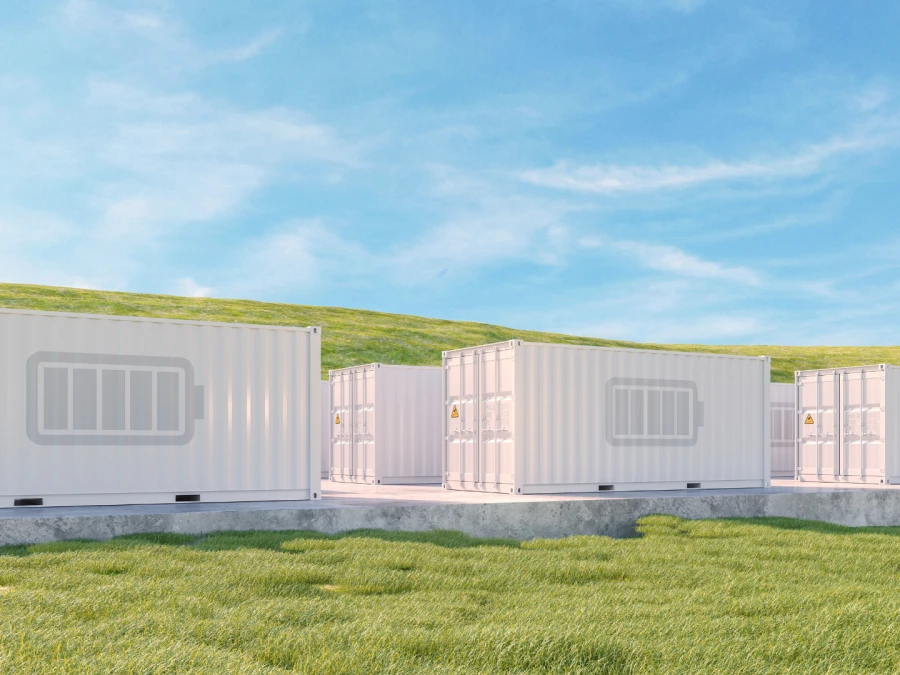Interview with Jan Michałowski, Country Lead, Poland: "DRI aims to be one of the leading BESS investors in the Polish energy sector”

Poland’s energy transformation is accelerating, and DRI is playing an active role as an IPP. In conversation with Jan Michałowski, DRI’s Country Lead for Poland, we explore the company’s expanding role in Europe’s battery storage sector, DRI’s vision to contribute to energy stability in Poland through BESS, and key aspects of its Trzebinia battery project. With a planned capacity of 133MW 4h (532MWh), the project marks a turning point in the country’s shift towards grid resilience.
How does DRI envision its role in the evolving European battery storage landscape?
DRI is taking an active role in the BESS “revolution” in the EU, as demonstrated by our investments in the Trzebinia project in Poland and by proactively looking for BESS projects across our other countries of operations, Italy, Croatia and Romania. Our parent company, the DTEK Group, is also developing several BESS projects within Ukraine, working together with Fluence and financing secured from €140 million.
By building our BESS portfolio we are contributing not only to the stability of grid systems in several European countries but are also strengthening the energy security across the continent. Looking ahead, we are going to develop its BESS optimisation capabilities on both the commercial and technical sides for its existing projects, whilst also expanding our portfolio, specifically seeking synergy between BESS and other RES sources.
The European Market Outlook for Battery Storage 2025-2029 reports a 15% growth in battery storage installations in 2024, totaling 21.9 GWh. How does DRI interpret this growth in the context of its strategic planning?
BESS will continue to grow at a very fast rate until market saturation. By 2030, we expect to have 60GWh of installed capacity in Europe, but my guess is that investors will be faster than analysts, and more BESS projects will come to life. DRI has identified the opportunity created by the introduction of industrial-scale BESS and decided to take a lead in this revolution by investing in and constructing BESS projects in Poland and exploring BESS projects in various European countries. This trend will continue and be followed by the expansion of our other functions, together with DTEK group companies—such as commercial and technical operation, optimisation, PPAs, and seeking synergy with other DTEK group businesses.
Could you provide an overview of the Trzebinia project's scope, including its capacity and expected impact on Poland's energy grid?
The Trzebinia project, with its 133MW of installed capacity and 532MWh, will be one of the largest BESS projects in Poland. We expect to start a construction in January 2026 and energize BESS in January 2027 to meet Capacity Market requirements and to make the best use of power market opportunities. During this timeline, we are securing a state-of-the-art BESS supplier with the most competitive pricing. For example, the expected energy density of a single enclosure will be 7.5 MWh.
This project will contribute to energy stability in the country, balancing the volatility of energy prices, and stabilising the grid in that part of the network.
How does the Trzebinia project align with Poland's national energy strategy and goals for renewable integration?
The Trzebinia project is a direct response to the changes taking place in Poland’s energy grid and power system. The project addresses the need to stabilise power prices, balance the grid, and provide various grid services at a time when Poland is reshaping its energy mix—from fossil fuel power generation to RES and CCGT. The Trzebinia BESS project will balance energy flows from north to south and support the management of wind and PV energy production during peak hours, allowing the system to be better prepared to manage RES sources under changing wind and solar conditions.
How is DRI collaborating with local stakeholders and authorities to ensure the project's success?
It is of paramount importance for DRI not only creates a project that benefits the national economy and is harmless to the environment, but also to contribute to the local community. We are proud to have established good relationships with local authorities and residents. DRI has supported the local Trzebinia Days at the end of June and will also support the local football club with an outing to one of Shakhtar Donetsk's European football games that will be played in Krakow the coming weeks.
Finally, DRI took part in the 4th edition of the PIME Battery Summit, organised in May in Warsaw—what key insights or takeaways stood out to you?
This was the 4th edition of the conference, and I observed a significant increase in the number of companies and attendees. This suggests that this specific niche of the energy storage sector is gaining importance. I would compare it to the PV revolution we experienced in Poland several years ago, when the country was among the global top three in PV installation growth. The same growth trajectory now applies to BESS.
I hope the expansion of industrial-scale BESS projects, combined with falling battery prices, will be followed by increased interest and demand from households. This would be a big step towards the introduction of a truly smart grid in Poland.
The next challenges for BESS projects include their integration with various types of renewables, grid stabilisation, and the provision of commercial ancillary services for other RES energy projects.
The future for BESS is bright. While BESS does not generate green energy, it enables smart use of it and brings relief to the power system. I will make my best effort to ensure DRI Poland remains a leader in this green storage revolution.
